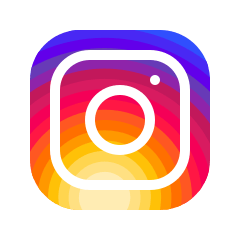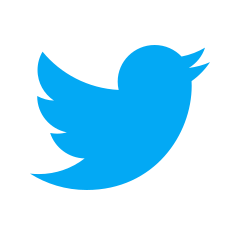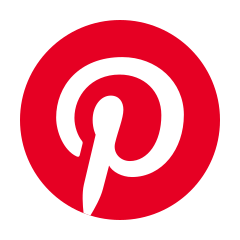
As an artist, it’s easy to feel overwhelmed by the idea of adding social media to your already busy schedule. Between creating new pieces, attending exhibitions, and managing your art business, finding the time to engage with your audience on social media may seem like a daunting task.
Dedicating as little as 30 minutes per day however to nurturing your online presence can have a significant long-term impact on your career. An effective social media strategy is an important part of your overall art marketing strategy.
Embracing Social Media Marketing for Artists allows you to showcase your work, connect with collectors, and build a supportive community of fellow artists and art enthusiasts. By consistently sharing your artistic journey and engaging with your audience, you can create a loyal following that is eager to support your work and spread the word about your talent.

Additionally, social media platforms offer a cost-effective way to reach a global audience, opening up opportunities for collaborations, exhibitions, and sales that may have been inaccessible through traditional marketing channels.
Investing just a small portion of your day in social media marketing can help you unlock these benefits and establish a thriving career as a professional artist. So, take a deep breath, and let’s dive into the world of social media marketing for artists.
Choosing the Right Social Media Platforms
Navigating the world of social media can be overwhelming. Selecting the right platforms for your art is essential to building a strong online presence.
How you use these platforms however is often more important than which you choose to work with. Instead of spreading yourself thin by trying to be active on every platform, focus on the ones that best align with your art and your target audience.
To decide which social media platform to start with, consider the following criteria:
- Audience Demographics: Research the demographics of each platform to understand where your target audience is most active. For example, if you’re targeting a younger audience, Instagram or TikTok might be more appropriate than Facebook.
- Content Format: Each platform has its unique content format and style. For instance, Instagram is visually driven, making it ideal for showcasing your artwork, while Twitter is better suited for short updates and conversations. Choose platforms that best accommodate your preferred content format.
- Ease of Use: Opt for platforms that you find intuitive and easy to use. This will make it more enjoyable for you to maintain your social media presence, increasing the likelihood of long-term success.
TIP: Remember that social media serves as a means to cultivate an audience and engage with your customers and followers. However, it can also be habit-forming, so it’s essential to monitor the time you invest in social media and continuously evaluate whether your usage is productive.
Best Social Media Options for Artists
When selecting social media platforms, consider your target audience and the type of content that best showcases your work. Experiment with different platforms to find the ones that resonate with your artistic vision and help you connect with a supportive community.
Each platform offers unique features and benefits that cater to different aspects of an artist’s career. Let’s explore some of the most popular platforms for artists.

Total US Users at Sep 2021: 140 million
With it’s large audience and visually-driven interface, Instagram offers artists an ideal space to showcase their work, engage with audiences, and monetize their craft. Its features and user base make it a perfect fit for artists seeking exposure and opportunities.
| US Age Demographic | Gender |
|---|---|
| 18-34 years: 67% 35-54 years: 25% 55+ years: 8% | Female: 50.3% Male: 49.7% |
As a visually-driven platform, Instagram for artists allows you to create a stunning online portfolio, utilizing features like photo and video posts, carousels, and Stories to exhibit their art. The platform’s emphasis on aesthetics caters to visual content, making it an ideal space for artists to engage with followers and potential clients.
Instagram’s hashtag system enables artists to target specific audiences and gain increased visibility, while the platform’s direct messaging feature facilitates communication with fans, collectors, and potential collaborators.
Furthermore, Instagram’s integration with shopping features allows artists to sell their work directly through the platform, creating an opportunity for monetization. Overall, Instagram offers numerous advantages to visual artists, providing them with a powerful tool to showcase their talent, network with the creative community, and potentially generate income from their craft.
For more reading, check out our post on How to Grow as an Artist on Instagram and Reach 100k Followers

Total US Users at Sep 2021: 190 million
Facebook offers artists a unique opportunity to showcase their work, engage with fans, and grow their audience. With features like Pages, Groups, and Events, artists can effectively promote and network within the creative community.
| US Age Demographic | Gender |
|---|---|
| 18-34 years: 50% 35-54 years: 37% 55+ years: 23% | Female: 54% Male: 46% |
As one of the largest social media networks globally, Facebook for artists provides an extensive user base, making it easier for artists to connect with potential fans, clients, and fellow creatives. The platform offers various features that cater to artists, such as the ability to create a dedicated artist page, photo and video albums, live streaming, and Facebook Stories. These features allow artists to share their creations, behind-the-scenes glimpses, and updates about their work.
Additionally, Facebook’s algorithm favors content that generates social media engagement, which means that compelling visuals have the potential to reach a broader audience. Artists can leverage Facebook’s advertising tools to target specific demographics, locations, or interests, enabling them to tailor their promotional efforts and maximize their impact.
By creating a dedicated artist page, you can share updates, events, and images of your work with your followers. Joining art-related groups on Facebook can also help you connect with fellow artists, collectors, and art enthusiasts, providing opportunities for networking and collaboration. Learn more about Facebook for artists here.
For more reading, check out our post on Your Guide on How to Sell Art on Facebook

Total US Users at Sep 2021: 69 million
While traditionally known for its text-based, short-form content, Twitter has evolved to accommodate various media types, including images, GIFs, and videos. This allows artists to share their creations easily and reach a wider audience.
| US Age Demographic | Gender |
|---|---|
| 18-34 years: 64% 35-64 years: 32% 65+ years: 4% | Female: 49% Male: 51% |
One advantage of using Twitter is its real-time nature, which enables artists to share updates, works-in-progress, and behind-the-scenes content, fostering a sense of connection with followers. Additionally, the platform’s hashtag system facilitates content discovery, helping artists to gain visibility among users interested in specific styles, themes, or techniques.
By utilizing Twitter effectively, visual artists can not only showcase their work but also establish a network of fellow artists, collaborators, and potential clients, creating opportunities for growth and collaboration in the art community. Check out this guide for artists on Twitter.

Total US Users at Sep 2021: 90 million
Pinterest is an excellent platform for visual artists, as it primarily focuses on sharing and discovering visual content. Its image-centric nature makes it an ideal space for artists to showcase their work, gain inspiration from others, and establish a dedicated following.
| US Age Demographic | Gender |
|---|---|
| 18-34 years: 55% 35-54 years: 37% 55+ years: 8% | Female: 60% Male: 40% |
A unique aspect of this social site is that it allows users to create themed boards, enabling artists to categorize and present their portfolios in an organized and visually appealing manner. The platform’s search and recommendation features help artists reach a wider audience, as users can easily discover new content based on their interests.
Moreover, Pinterest’s social aspects, such as the ability to follow, save, and repin content, enable artists to expand their networks, gain valuable feedback, and collaborate with others in their field. This platform is especially useful for driving traffic to your website or online portfolio. Learn how to use Pinterest for artists effectively.

Total US Users at Sep 2021: 170 million
LinkedIn, primarily known as a professional networking platform, may not be the first choice for artists seeking to showcase their work. It can still however offer several advantages to artists in terms of building connections, gaining visibility, and accessing job opportunities.
| US Age Demographic | Gender |
|---|---|
| 18-34 years: 47% 35-54 years: 33% 55+ years: 20% | Female: 43% Male: 57% |
The platform allows visual artists to create a professional profile detailing their skills, experience, and accomplishments, which can help them establish credibility and attract potential clients or employers. LinkedIn is an excellent platform for connecting with art industry professionals, galleries, and collectors to pursue artist collaborations.
Additionally, LinkedIn provides a space to share portfolio pieces, updates, and articles, further increasing an artist’s online presence. By joining industry-specific groups and engaging with other professionals in the art world, visual artists can expand their network, learn from their peers, and discover new opportunities. Read more about LinkedIn for artists here.

TikTok
Total US Users at Sep 2021: 100 million
This platform’s short-form video content can be a creative way to promote your art. Share time-lapse videos of your creative process, behind-the-scenes footage, or even art challenges to engage with a younger audience and showcase your personality.
| US Age Demographic | Gender |
|---|---|
| 10-19 years: 33% 20-29 years: 20% 30-49 years: 30% 50+ years: 7% | Female: 60% Male: 40% |
The video format is particularly beneficial for artists working in mediums like illustration, digital art, animation, and even traditional painting, as it allows them to demonstrate their creative process, share time-lapse videos of their work, or reveal the finished product in a captivating and easily digestible manner.
Furthermore, TikTok’s powerful algorithm can quickly expose artists to a larger audience, potentially leading to increased visibility and career opportunities. The platform encourages user interaction, enabling artists to foster a community, receive instant feedback, and engage with fellow creators through collaborations, challenges, or duets.
Overall, TikTok provides visual artists with a unique opportunity to showcase their talent, connect with viewers, and leverage the platform’s viral potential to reach new heights in their artistic careers. For tips on using TikTok for art promotion, check out this guide.

Youtube
Total US Users at Sep 2021: 200 million
YouTube has emerged as a popular platform for artists, providing them with numerous advantages to showcase their talent and reach a global audience. The platform’s extensive user base offers artists the opportunity to connect with a diverse range of viewers across age groups and demographics.
| US Age Demographic | Gender |
|---|---|
| 15-25 years: 37% 26-45 years: 45% 46-55 years: 12% 55+ years: 6% | Female: 50% Male: 50% |
YouTube’s easy-to-use video-sharing features enable artists to upload and share their content, while the platform’s algorithm helps in content discovery, introducing their work to potentially millions of viewers. Furthermore, YouTube’s monetization options, such as ad revenue and channel memberships, allow artists to generate income from their content, making it a viable career option.
Moreover, YouTube’s integration with social media platforms and other websites facilitates content sharing, increasing artists’ exposure and engagement with their audience. Overall, YouTube provides a powerful, accessible platform for artists to showcase their creativity, grow their fan base, and potentially generate income from their passion.
We cover the opportunity youtube offers artists more in out post Starting An Art Youtube Channel
Setting Goals and Defining Your Audience

Once you’ve selected the platforms you want to focus on, it’s vital to prioritize the quality and consistency of your content. Regular postings help you maintain visibility and build a strong connection with your audience.
However, don’t sacrifice quality for the sake of quantity. High-quality content not only showcases your art in the best light but also makes it more likely that your audience will engage with and share your work.
An essential aspect of successful social media marketing for artists is identifying your target audience and setting clear, measurable goals. By understanding:
you can tailor your content to resonate with your audience and drive social media engagement on your chosen platforms.
Begin by identifying the different groups that you want to target with your social media presence. The main audience will likely be potential buyers who would be interested in purchasing your art. Think about the demographics, interests, and behaviors that characterize your ideal customer.
Other groups you may wish to target on social media are fellow artists for collaborations, and galleries or museums for possible partnerships. By understanding these target groups, you can create content that appeals to their preferences and interests.
Setting Goals for Social Media
Once you have defined your audience, establish clear and measurable goals for your social media marketing efforts. These goals should align with your overall objectives as an artist, such as increasing your exposure, building an audience, or driving sales.
Examples of measurable goals include increasing the number of followers on a particular platform, generating a specific number of website visits, or achieving a certain level of engagement on your posts.
With your target audience and goals in mind, tailor your content to your audience’s preferences. This may involve creating visually appealing images or videos, sharing behind-the-scenes insights into your artistic process, or posting about topics that resonate with your target groups.
Delivering content that appeals to your audience, you can create a strong social media presence that helps you achieve your marketing goals and grow your artistic career.

Building Your Brand Identity on Social Media Accounts
Establishing a strong brand identity on social media is important to market your art effectively.
A well-defined artist brand identity helps you stand out from the competition, connect with your target audience, and create a memorable impression. To achieve this, focus on creating a consistent visual style, developing a unique voice and tone, and crafting a compelling artist bio.
A consistent visual style is vital in making your social media profiles instantly recognizable and appealing to your audience. Consider your color palette, fonts, and overall aesthetic, ensuring that they are in harmony with your artistic style and vision.
Use high-quality images of your artwork, and maintain a uniform look across all your posts and social media platforms. This consistency helps reinforce your brand identity and makes it easier for followers to recognize and remember your work.
Your voice and tone on social media should reflect your personality as an artist and resonate with your target audience. Whether you choose to be informative, playful, or introspective, make sure your voice is authentic and consistent across your content.
Engage with your audience by responding to comments, asking questions, and sharing your thoughts and experiences. This approach helps you establish a personal connection with your followers and encourages them to engage with your content.
Finally, craft a compelling artist bio that succinctly conveys who you are, what you do, and why your art is unique. Include relevant information about your background, artistic influences, and any notable achievements or exhibitions.
Ensure that your bio is concise, easy to read, and engaging, as this will encourage your audience to explore your work further. Your artist bio should be prominently displayed on your social media profiles, making it easy for potential followers to learn more about you and your art.
Read more here about How to Brand Yourself as an Artist

Creating Engaging and High-Quality Content
Producing engaging and high-quality content is key to success in attracting and retaining a dedicated following on social media and building a social presence.
Offering a variety of content formats, sharing behind-the-scenes footage, posting consistently, and collaborating with fellow artists, you can create a dynamic and captivating social media presence.
Sharing behind-the-scenes footage and work-in-progress shots allows your audience to get a glimpse into your creative process, adding depth to your artwork and fostering a personal connection with your followers. This type of content humanizes your artistic practice and invites your audience to join you on your journey.
Utilize different content formats to keep your social media feed fresh and interesting. Experiment with photos, videos, stories, and live streaming to showcase your work from various angles and engage with your audience in diverse ways. For example, Instagram Stories and live streaming on platforms like Facebook or Twitch can offer a more personal and interactive experience.
Posting regularly and maintaining a consistent schedule is vital in keeping your audience engaged and building a strong online presence. Use social media scheduling tools like Buffer or Later to plan your posts in advance and ensure you maintain a steady content flow.
Collaborating with other artists and featuring their work on your social media profiles not only helps you expand your audience but also fosters a sense of community and support within the art world. Cross-promote each other’s work, participate in joint projects, or organize online events to create mutually beneficial relationships.
Outsourcing the Work of Creating High-Quality Content

If you find yourself struggling with the time and skills needed to create engaging and high-quality content, consider outsourcing the work to professionals who specialize in content creation for artists. By delegating the task, you can focus on your art while maintaining a consistent and attractive social media presence.
To find the right help, consider the following:
Remember to maintain open communication with the professionals you work with, providing clear guidelines on your brand identity, artistic vision, and content goals.
By outsourcing your content creation, you can ensure a polished and consistent online presence that effectively showcases your art and engages your audience.

Growing Your Follower Count and Engaging with Your Community
As an artist, it’s important not only to create and share content but also to actively engage with your audience and the broader artistic community. This will help you grow your following and establish genuine connections with those who appreciate your work.
Here are some strategies to grow your audience and engage with your community on social media:
These strategies will allow you to effectively grow your audience and engage with your community on social media. Remember, consistency and genuine interactions are key to building a loyal following and establishing a successful presence in the online art world.
Leveraging Analytics and Measuring Success
To make the most of your social media marketing for artists efforts, it’s important to monitor your performance and make data-driven decisions. Here are some key areas to focus on when analyzing your social media success:

Monitoring Engagement Metrics
Keep an eye on social media engagement metrics, such as likes, comments, shares, and followers, to gauge the success of your content. These metrics can provide insights into what resonates with your audience and help you identify areas for improvement.
There are several tools that can help you monitor engagement metrics across multiple social networks. These tools can provide a comprehensive view of your social media performance, allowing you to track and analyze key metrics from various platforms in one place. Some popular tools include:
- Hootsuite: Hootsuite is a popular social media management tool that allows you to schedule posts, monitor engagement metrics, and analyze your performance across multiple social networks, including Facebook, Instagram, Twitter, LinkedIn, and Pinterest.
- Buffer: Buffer is another social media management tool that helps you schedule posts, track engagement, and analyze your performance across multiple platforms. Buffer supports Facebook, Instagram, Twitter, LinkedIn, and Pinterest.
- Sprout Social: Sprout Social is a comprehensive social media management platform that offers advanced analytics, engagement monitoring, and reporting across various social networks, including Facebook, Instagram, Twitter, LinkedIn, and Pinterest.
- Agorapulse: Agorapulse is a social media management tool that enables you to schedule posts, monitor engagement, and analyze your performance across multiple platforms, including Facebook, Instagram, Twitter, LinkedIn, and YouTube.
These tools usually offer a range of features and pricing plans, so it’s essential to research and choose the one that best fits your needs and budget. By using one of these tools, you can easily track your engagement metrics across multiple social networks and make data-driven decisions to optimize your social media marketing strategy.
Analyzing the Performance of Different Content Types
Review the performance of various content formats, such as photos, videos, and stories, to determine which ones generate the most engagement. This will help you tailor your content strategy to your audience’s preferences and maximize your reach.
Adjusting Your Strategy Based on Insights from Data
Use analytics tools like Instagram Insights or Facebook Analytics to gather data on your performance and make informed decisions about your social media strategy.
Key Takeaways to Building a Social Media Strategy
| Key Takeaways |
|---|
| Embracing social media marketing can significantly boost an artist’s visibility, allowing them to connect with collectors and build a supportive community. It’s a cost-effective strategy to reach a global audience. |
| Selecting the right social media platforms is crucial. The choice should be based on the alignment with the artist’s work and target audience, considering factors like audience demographics, content format, and user-friendliness. |
| Platforms like Instagram, Facebook, Twitter, Pinterest, LinkedIn, TikTok, and YouTube offer unique benefits to artists, each catering to different user demographics. |
| Identifying the target audience and setting clear, measurable goals can streamline an artist’s social media marketing efforts, ensuring they resonate with the right audience. |
| Building a strong brand identity on social media platforms can be achieved by maintaining a consistent visual style, developing a unique voice and tone, and crafting a compelling artist bio. |
| Variety in content formats, sharing behind-the-scenes footage, consistent posting, and collaborations with fellow artists can significantly enhance engagement and create a captivating social media presence. |
| Outsourcing content creation to professionals can be a viable option for artists struggling with time and skills, ensuring a consistent and attractive social media presence. |
| Utilizing relevant hashtags and keywords, interacting with followers, participating in online art challenges and events, and cross-promoting on other platforms can effectively grow an artist’s audience and foster community engagement. |
| Monitoring social media performance and making data-driven decisions can maximize the effectiveness of an artist’s social media marketing efforts. Tools like Hootsuite, Buffer, Sprout Social, and Agorapulse can assist in this process. |
To stay ahead of the curve and reach new audiences, you will need to adapt to new social media platforms and features. While it’s important to keep up with trends, remember to stay true to your artistic vision. Find creative ways to incorporate popular trends into your content without compromising your unique style and message.
Marketing art on social media involves choosing the right platforms, setting goals, defining your audience, building your brand identity, creating engaging content, and leveraging analytics for success. Embracing these strategies and staying up-to-date on the latest trends, you can effectively promote your art, grow your audience, and achieve success in the online art world.
So, don’t hesitate to invest time and effort in your social media marketing journey and watch your art career flourish.






